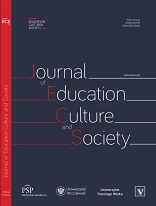Computer Aided Translation – possibilities, limitations and changes in the field of professional translation
Computer Aided Translation – possibilities, limitations and changes in the field of professional translation
Author(s): Patrycja KarpińskaSubject(s): Language and Literature Studies, Translation Studies
Published by: Fundacja Pro Scientia Publica
Keywords: Computer-Aided Translation; machine translation; equivalence; literary translation
Summary/Abstract: The aim of this article is to investigate the usefulness and applicability of CAT (Computer-Aided Translation) programmes in relation to the qualities (e.g. standardisation, predictability, terminology) of the translated text. In the study both scientific articles and translator’s forums are taken into account in order to establish advantages and limitations of commercial CATs. It appears that CAT programmes influence cognitively the translator’s work and even though they are supposed to facilitate his or her work, they may hinder or slow down the process of translation. These programmes are also applicable only in the case of certain types of texts, namely those which are standard and predictable and they fail in the case of texts which are linguistically or culturally-coloured. Furthermore, translators express numerous practical concerns regarding CATs (e.g. their price, instability). However, their use has become a very basic translation skill and it is no longer an advantage but an absolute necessity for anyone wishing to work as a translator.
Journal: The Journal of Education, Culture, and Society
- Issue Year: 8/2017
- Issue No: 2
- Page Range: 133-142
- Page Count: 10
- Language: English

